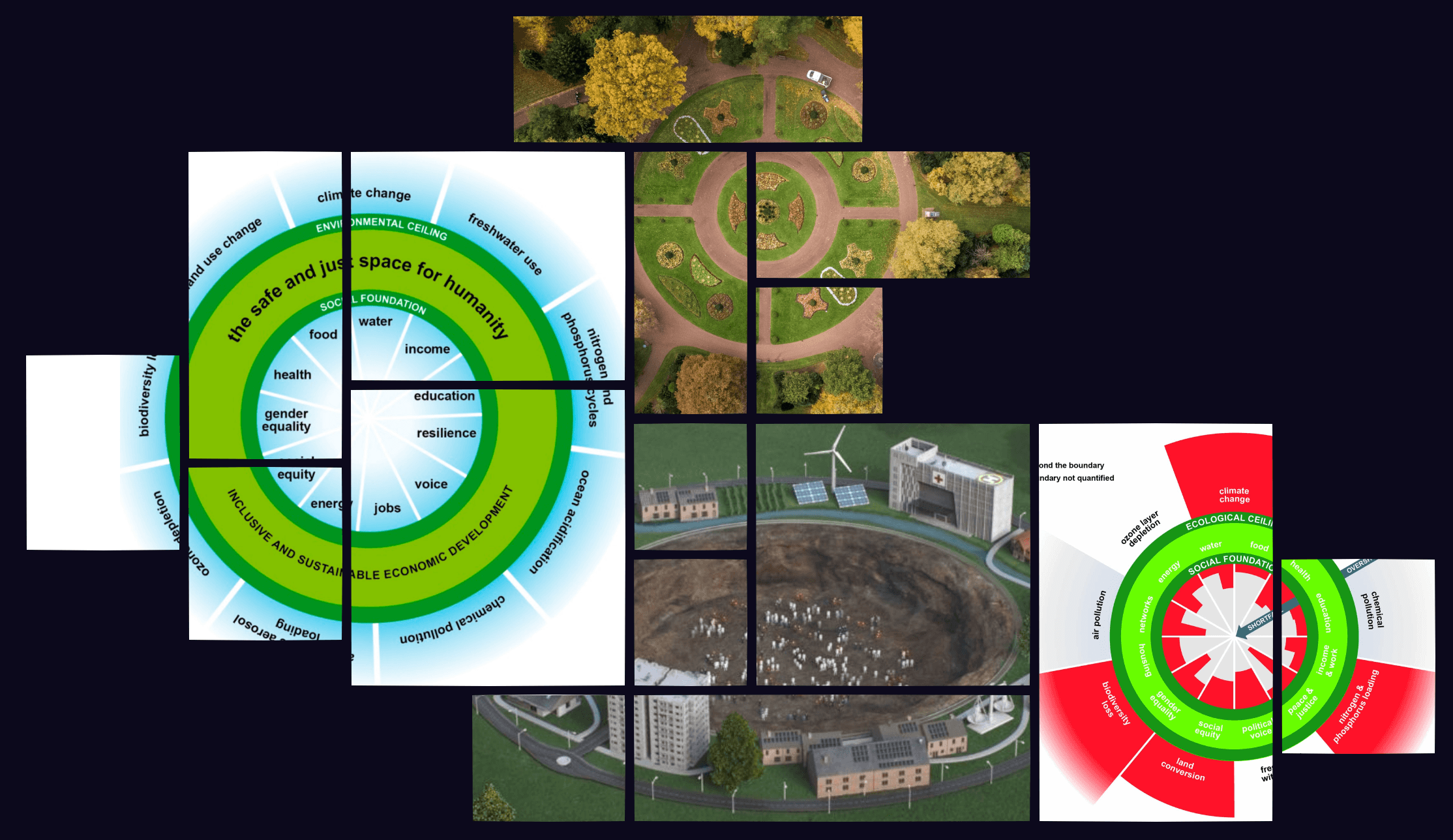The Global Landscape of Universities
Dinis GuardaAuthor
Tue Apr 22 2025

Universities have long stood as pillars of intellectual advancement, societal progress, and cultural preservation. As we speak, their significance is more pronounced than ever, serving as catalysts for innovation, economic development, and global collaboration. As hubs of research and learning, universities not only disseminate knowledge but also foster critical thinking, creativity, and civic responsibility.
Universities have long stood as pillars of intellectual advancement, societal progress, and cultural preservation. As we speak, their significance is more pronounced than ever, serving as catalysts for innovation, economic development, and global collaboration. As hubs of research and learning, universities not only disseminate knowledge but also foster critical thinking, creativity, and civic responsibility. In an era marked by rapid technological change and complex global challenges, the role of universities in shaping informed, adaptable, and engaged citizens is indispensable.
In 2025, the global landscape of universities will be characterized by a blend of traditional strengths and emerging trends, including a growing emphasis on skills-based learning, increased global mobility challenges, and a greater focus on sustainability and digital transformation. Universities will need to adapt to these changes to remain competitive and relevant in the evolving higher education sector.
Africa and the world both have relatively young populations, but Africa has the youngest population of any continent. Approximately 40% of Africa's population is under 15 years old, compared to a global average of about 25%. The median age in Africa is around 20 years, while the global median age is higher. Africa's Young Population: Africa is considered the youngest continent globally. In Sub-Saharan Africa, over 40% of the population is below 15 years old, and only about 3% are over 65. This is partly due to high fertility rates and low life expectancy in some regions. Global Youth Population: Globally, about 25% of the population is under 15, and 10% is over 65. However, this is a global average, and the proportion of young people varies significantly by region.
With increasing automation and AI redesigning society and changing the landscape of many industries, education institutions and special universities have to reinvent themselves and shift towards a continuous reskilling curriculum that focuses more on real-world skills. Students will require new certifications and may find themselves taking more industry, project-based tech personal skills courses and engaging in interactive internships, micro-internships, and industry partnerships during their studies. The Universities that will take this in consideration will have new opportunities but the ones that will resist change will face major challenges and potential extinction.
Key Trends and Challenges:
- Skills-Based Learning:
The focus will shift from solely academic credentials to practical skills and experience, including project-based learning, internships, and industry partnerships. - Global Mobility Challenges:
Restrictive visa policies and bureaucratic hurdles will make it harder for top talent to move into university positions, particularly in countries like the UK and US. - Sustainability and Green Initiatives:
Universities will increasingly prioritize environmental responsibility, implementing eco-friendly practices, embedding sustainability in curricula, and collaborating on research related to climate change and sustainable development. - Digital Transformation:
AI, technology, and online/hybrid learning models will play a more significant role in higher education, requiring universities to adapt their teaching methods and infrastructure. - Financial Constraints:
Universities face ongoing financial pressures, including declining enrollments, increasing competition, and potential funding cuts. - Emerging Markets in Higher Education:
Emerging economies, such as Brazil, Saudi Arabia, and the UAE, are becoming more prominent in the global university landscape, contributing to the rise of new international institutions. - Ethical Considerations of AI:
Universities must address the ethical implications of AI use in research, teaching, and admissions, including issues like plagiarism, data privacy, and potential biases. - Innovation and Adaptability:
Universities need to foster a culture of innovation and be prepared to adapt to the changing needs of students and the job market. - Collaboration and Partnerships:
Strengthening relationships with industry, governments, and NGOs will be crucial for research, innovation, and curriculum development. - Focus on Student Experience:
Universities must prioritize the overall student experience, including support for international students, digital-first admissions processes, and personalized learning pathways. - Prioritizing Inclusivity and Diversity:
Universities should actively promote diversity and inclusion, both within their institutions and in their international outreach.
Global University Landscape: Numbers and Distribution
Total Number of Universities Worldwide
As of 2025, there are approximately 50,000 universities globally. This figure reflects a significant expansion from the early 2000s, driven by increased demand for higher education and the proliferation of institutions across various regions.
Regional Distribution
The distribution of universities is uneven across the globe, with certain countries hosting a substantial number of institutions:
- India: Approximately 8,410 universities
- United States: Around 5,762 universities
- China: About 3,013 universities
- Argentina: Approximately 1,709 universities
- Brazil: Around 1,507 universities
- Spain: Approximately 1,417 universities
- Mexico: Around 1,343 universities
- Russia: Approximately 1,306 universities
- Bangladesh: Around 1,270 universities
- Indonesia: Approximately 1,239 universities
These numbers underscore the global emphasis on expanding access to higher education, particularly in emerging economies.
Public vs. Private Institutions
The global higher education landscape comprises both public and private universities. According to the AD Scientific Index:
- Public Universities: Approximately 10,324 institutions
- Private Universities: Around 8,314 institutions
This indicates that public universities constitute about 55% of the total, while private institutions make up the remaining 45%.
Academic Disciplines: Humanities vs. Science and Technology
Humanities
The humanities encompass disciplines such as literature, philosophy, history, and the arts. In 2025, these fields continue to be integral to university curricula, fostering critical thinking and cultural understanding. Notably, the Massachusetts Institute of Technology (MIT) has achieved top rankings in arts and humanities, reflecting a broader trend of integrating humanities with technological studies.
Science and Technology
Science and technology disciplines, including engineering, computer science, and life sciences, are central to addressing contemporary challenges. Institutions such as MIT, Stanford University, and the University of Oxford lead in these areas, emphasizing research and innovation. The QS World University Rankings by Subject 2025 highlight the prominence of these institutions in engineering and technology fields.
Enrollment and Access
Globally, approximately 254 million students are enrolled in higher education institutions. Despite this substantial number, the global gross enrollment ratio for tertiary education stands at 42%, indicating that access remains uneven across regions. Efforts to expand enrollment are ongoing, with particular focus on underrepresented populations and regions.
Global Benchmarks and Rankings
Times Higher Education (THE) World University Rankings 2025
The THE World University Rankings 2025 evaluated over 2,000 institutions across 115 countries. Key insights include:
- The University of Oxford maintains a leading position globally.
- MIT has achieved top rankings in multiple disciplines, including arts and humanities, business and economics, and social sciences.
- Asian institutions, particularly in China and Singapore, are ascending in global rankings, reflecting increased investment in higher education.
QS World University Rankings by Subject 2025
The QS World University Rankings by Subject 2025 cover 55 individual subjects across five broad areas:
- Arts and Humanities: Harvard University, University of Oxford, and University of Cambridge lead.
- Engineering and Technology: MIT, University of Oxford, and Stanford University are top-ranked.
- Life Sciences and Medicine: Harvard University and University of Oxford are prominent.
- Natural Sciences: Harvard University and MIT lead the rankings.
Social Sciences and Management: Harvard University and University of Oxford are at the forefront.
Conclusion: The Future of Global Higher Education
The world's young world population will have new major challenges as we rise to the 5th Industrial revolution powered by AI. The rise of AI is expected to massively impact higher education, requiring universities to adapt their courses and strategies. A young population may mean increased competition for university places, while AI could automate many existing jobs, necessitating a focus on future-proof skills and careers.
As we navigate the complexities of the 21st century, universities remain vital to societal advancement. Their role in fostering innovation, integrating AI to empower students and redesign certificates and programs, promoting cultural understanding, and addressing global challenges is more important than ever and is unparalleled. Continued investment, redesign of what are their roles and are universities space in higher education, equitable access, and interdisciplinary collaboration will be essential in shaping a resilient and inclusive global society.
previous
The Whisper of Wellness: Exploring Frequency Healing
next
Compulsive vs Impulsive Disorders: Where Do We Draw the Line?
Share this

Dinis Guarda
Author
Dinis Guarda is an author, entrepreneur, founder CEO of ztudium, Businessabc, citiesabc.com and Wisdomia.ai. Dinis is an AI leader, researcher and creator who has been building proprietary solutions based on technologies like digital twins, 3D, spatial computing, AR/VR/MR. Dinis is also an author of multiple books, including "4IR AI Blockchain Fintech IoT Reinventing a Nation" and others. Dinis has been collaborating with the likes of UN / UNITAR, UNESCO, European Space Agency, IBM, Siemens, Mastercard, and governments like USAID, and Malaysia Government to mention a few. He has been a guest lecturer at business schools such as Copenhagen Business School. Dinis is ranked as one of the most influential people and thought leaders in Thinkers360 / Rise Global’s The Artificial Intelligence Power 100, Top 10 Thought leaders in AI, smart cities, metaverse, blockchain, fintech.
More Articles

What Would a Wise Economy Look Like? Welcome to Doughnut Economics

Elder Voices of the Millennium: Cornel West

What Carl Jung Meant by Individuation and Why It Still Matters

Classroom Practices That Nurture Reflection, Empathy, and Presence: A Complete Guide for Educators

Listening to Trees: The Art of Ecological Perception





